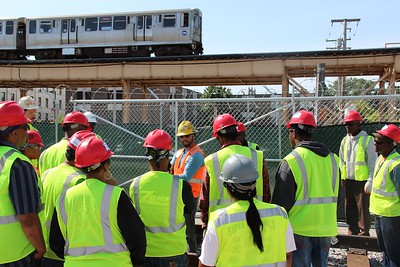A new report authored by the American Association of Community Colleges and Harvard Business School shows a growing disagreement between employers and two-year colleges regarding the workforce readiness of community college graduates.
Employers say that it has become increasingly difficult to find enough employees who have the skills and diversity that they want. Even though nearly 85% of employers said they hire community college graduates, only 26% of employers said they strongly agreed that community colleges provide “work-ready” graduates. Nearly half of employers said that it was more cost-effective to hire employees from the open market than it was to invest in training new employees.
Community colleges say that they lack the right level of engagement with employers. For example, according to community colleges, about half of employers cannot say they know the skills they’re hiring for. Another 30% firmly admit they don’t know what skills they need from new employees. That means nearly 80% of employers have not identified or cannot identify the skills they want new hires to have.
In other words, when community colleges ask employers what they want, eight out of ten times, the answer is, “I don’t know.” Which makes it very hard to justify turning to employers for advice on improving academic programs.
Community colleges have voluntarily put themselves in the unfortunate position of being any and every local employer’s training department. That’s not really what community colleges were meant for. Rather than relying on local employers to determine what they want (or might/might not want) from newly trained candidates, community colleges should determine the skills workers need to do the work, regardless of who employs them.
Community college should work with industries, not employers
That seems to call for heavier reliance on industry and trade groups for advice and direction rather than individual employers. That may make a lot more sense than hoping local employers figure something out. It also creates stability and consistency in the content of academic programs. Since 75% of businesses don’t make it past their 15th anniversary, why worry about what any one particular employer wants or needs? Let those employers create and deliver fine-tuned training programs on their own time and their own dime.
One element the report didn’t look at was the students who are supposed to fill seats at the community college and later transition to the workforce. In characterizing workforce development as a partnership between community colleges and employers, the report ignores the fact that students aren’t just along for the ride. This is a three-way partnership, and there needs to be something in the equation for the students. That “something” must be the reasonable assurance that employers will hire them following graduation, and that the students will make a living wage. Without these assurances, students will simply not enroll.
Community colleges cannot continue to overlook students in their quest (fool’s errand?) to assist employers who cannot say or do not know what they want from new hires, and will not commit to hiring them anyway. Two-year schools also need to look beyond local employers and focus more broadly on their industries.
Photo Credit: Chicago Transit Authority , via Flickr












